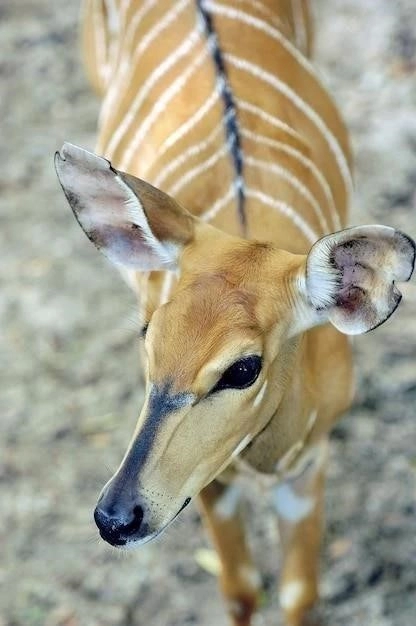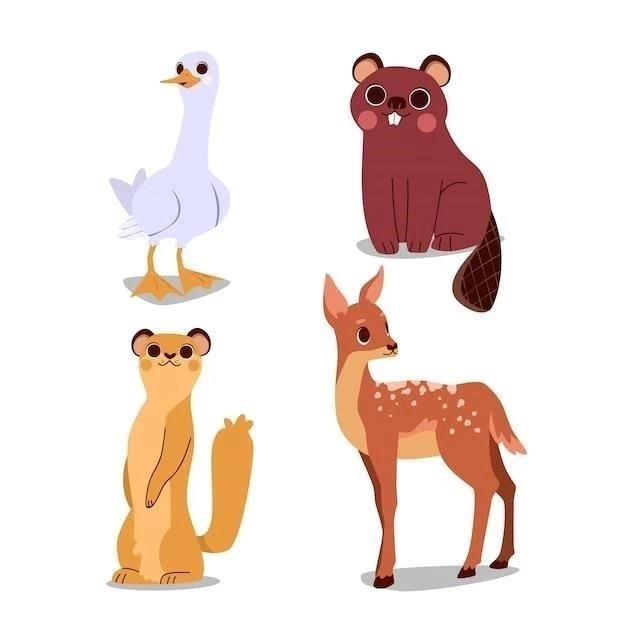Physical Characteristics
The okapi, a captivating denizen of the rainforest, displays a unique and striking appearance. Its physique showcases a fascinating blend of features reminiscent of various animals, yet it possesses its own distinct charm. Okapis typically stand at a shoulder height of around 4.5 feet, with their bodies reaching lengths of up to 8 feet. Their weight can range from 440 to 770 pounds.

Habitat and Distribution
The okapi, a creature of enigmatic beauty, claims a singular and irreplaceable habitat: the dense, verdant rainforests of the Democratic Republic of Congo in Central Africa. This region, characterized by its high rainfall, towering trees, and a rich tapestry of biodiversity, provides the ideal sanctuary for this elusive and fascinating animal.
Okapis are highly specialized to their environment, exhibiting a preference for undisturbed, primary forests. These forests, with their dense canopies that filter sunlight, creating a mosaic of shade and light, offer the perfect cover for the okapi’s solitary and secretive nature. They navigate the undergrowth with surprising agility, their reddish-brown coats, adorned with zebra-like stripes on their hindquarters, providing exceptional camouflage amidst the dappled light and shadows.
Within this rainforest realm, okapis are most commonly found in areas with an abundance of understory vegetation, particularly near rivers and streams. The presence of water is crucial, not only for drinking but also for the growth of the okapi’s preferred food sources, such as leaves, fruits, and fungi. These areas also provide access to essential minerals, which okapis obtain by licking clay and charcoal.
The okapi’s range is primarily restricted to a relatively small area within the Congo Basin, encompassing regions north and east of the Congo River. This limited distribution underscores the species’ vulnerability to habitat loss and fragmentation, making its conservation a matter of paramount importance.
Sadly, the okapi’s rainforest home faces increasing pressure from human activities, including deforestation, mining, and agriculture. These threats, coupled with political instability and the presence of armed conflict in the region, have led to a decline in okapi populations, pushing them towards a precarious future.
Conservation efforts are underway to protect the okapi and its fragile habitat. These efforts focus on establishing protected areas, combating poaching and illegal wildlife trade, and promoting sustainable forest management practices. However, the challenges are multifaceted, requiring a concerted and collaborative approach from governments, conservation organizations, and local communities to ensure the long-term survival of this remarkable and irreplaceable species.

Diet and Feeding
The okapi, an herbivore uniquely adapted to its rainforest habitat, displays specialized feeding habits that are intertwined with the abundant flora of the Congo Basin. Its diet, primarily comprised of plant matter, reflects the diversity and richness of its environment.
The okapi’s long, prehensile tongue, extending up to 18 inches, serves as a remarkable tool for foraging amidst the dense undergrowth. This dexterous appendage, capable of remarkable agility, allows the okapi to selectively pluck leaves, buds, and fruits from a variety of plants, often reaching heights inaccessible to other herbivores.
Their diet includes leaves from over 100 different plant species, demonstrating a preference for young, tender foliage. In addition to leaves, okapis consume a variety of fruits, buds, ferns, and grasses, supplementing their diet with fungi and minerals obtained by licking clay and charcoal deposits.
The okapi’s digestive system, similar to that of other ruminants, is specifically designed to break down the tough cellulose found in plant matter. Their stomachs, divided into multiple chambers, harbor a complex community of microorganisms that ferment and digest plant material, extracting essential nutrients.
Okapis are primarily diurnal, meaning they are most active during the day, dedicating a significant portion of their waking hours to foraging. They move slowly and deliberately through the undergrowth, using their keen sense of smell and hearing to locate food sources and avoid potential threats.

The availability of food resources varies seasonally, influencing the okapi’s movements and feeding patterns. During periods of abundance, they may establish small home ranges, venturing out only short distances to forage. However, when food becomes scarce, they may travel longer distances in search of sustenance.
The okapi’s specialized diet and feeding habits play a crucial role in maintaining the health and balance of the rainforest ecosystem. As browsers, they contribute to seed dispersal, promoting plant diversity, and influencing the structure and composition of the understory vegetation.

Behavior
The okapi, an elusive denizen of the rainforest, leads a largely solitary and secretive life, its behaviors finely tuned to the dappled light and dense undergrowth of its Congolese habitat. While much remains to be discovered about this enigmatic creature, ongoing research continues to unveil fascinating glimpses into its life in the wild.
Okapis are primarily diurnal, meaning they are most active during daylight hours, although they may exhibit some crepuscular activity, venturing out in the dim light of dawn and dusk. They are solitary animals, with the exception of mothers and their calves, and maintain well-defined territories, which they mark with urine and scent glands located on their feet.
Communication plays a crucial role in the okapi’s solitary lifestyle. They possess a wide range of vocalizations, including soft coughs, whistles, and grunts, which are used to maintain contact with offspring, advertise their presence, or signal alarm in the face of danger.
Despite their size, okapis are remarkably agile and navigate their dense rainforest habitat with surprising grace. Their keen senses of hearing and smell compensate for their relatively poor eyesight, allowing them to detect predators, such as leopards and African wild dogs, and to locate food sources.
Okapis are herbivores and spend a significant portion of their day foraging for food. Their long, prehensile tongues are perfectly adapted for browsing on leaves, buds, and fruits, while their specialized digestive systems allow them to extract nutrients from tough plant matter.
Reproduction in okapis is a solitary affair, with females giving birth to a single calf after a gestation period of approximately 15 months. Mothers are highly protective of their young and will fiercely defend them from any perceived threats.
The okapi’s elusive nature and the challenges of observing it in its natural habitat have made it one of the least studied large mammals on Earth. However, ongoing research efforts, utilizing innovative techniques such as camera trapping and satellite tracking, are providing valuable insights into the behavior and ecology of this fascinating and threatened species.

Relationship with Giraffes
The okapi, with its zebra-like stripes and equine physique, might seem an unlikely relative of the towering giraffe. However, beneath this deceptive exterior lies an undeniable kinship, a testament to the remarkable diversity and evolutionary history of the Giraffidae family.
The okapi and the giraffe are the sole surviving members of this ancient lineage, their shared ancestry evident in a suite of distinctive features. Both possess elongated necks, though the okapi’s is considerably shorter than its towering cousin’s. They share a similar dental structure, with low-crowned molars adapted for grinding plant matter, and possess a unique ossicone structure—skin-covered horns found only in giraffids.
Genetic studies have confirmed this close relationship, placing the okapi and giraffe as sister taxa, diverging from a common ancestor approximately 11.5 million years ago. This divergence coincided with significant geological and climatic changes in Africa, particularly the formation of the Congo Basin and its dense rainforests.
As the African landscape transformed, so too did the giraffids. The giraffe lineage adapted to open savannas and woodlands, evolving long necks and legs to exploit high-growing vegetation. In contrast, the okapi lineage specialized for life in the dense rainforest, retaining a more compact body size and shorter neck, advantageous for maneuvering through the undergrowth.
Despite their contrasting appearances and ecological niches, the okapi and giraffe stand as testaments to the power of adaptation and the interconnectedness of life. Their shared ancestry underscores the profound influence of evolutionary history in shaping the diversity of life on Earth.
The okapi, often referred to as the “forest giraffe,” serves as a living link to the giraffe’s evolutionary past, offering valuable insights into the origins and diversification of this unique mammalian lineage. By studying the okapi, researchers can glean a deeper understanding of the evolutionary forces that have shaped the extraordinary adaptations of both species.

Conservation Status
The okapi, an emblem of the irreplaceable biodiversity of the Congo Basin, faces an uncertain future. Classified as “Endangered” by the International Union for Conservation of Nature (IUCN), this enigmatic creature is threatened by a multitude of factors, both human-induced and environmental, that have pushed it precariously close to the brink.
Habitat loss stands as the most pressing threat to the okapi’s survival. The lush rainforests of the Democratic Republic of Congo, its sole refuge, are under increasing pressure from deforestation, driven by logging, mining, and agricultural expansion. As these forests dwindle and fragment, okapi populations become isolated, their genetic diversity diminished, and their long-term survival compromised.
Poaching poses an additional, insidious threat. Okapis are targeted for their meat, prized in the bushmeat trade, and their distinctive coats, which fetch high prices on the black market. Political instability and armed conflict within the region exacerbate this problem, as law enforcement efforts are hampered and access to protected areas becomes increasingly challenging.
Climate change adds another layer of complexity to the okapi’s conservation plight. Rising temperatures and altered rainfall patterns are predicted to impact the delicate balance of the rainforest ecosystem, potentially affecting the availability of the okapi’s preferred food sources and disrupting its reproductive cycles.
Despite these formidable challenges, hope remains for the okapi. Conservation organizations, governments, and local communities are working collaboratively to protect this iconic species and its habitat. Efforts are focused on strengthening anti-poaching patrols, establishing and managing protected areas, promoting sustainable land-use practices, and raising awareness about the okapi’s plight.
The okapi’s future hinges on a multifaceted approach, one that addresses the complex interplay of habitat loss, poaching, climate change, and political instability. By fostering international cooperation, empowering local communities, and promoting sustainable development, we can strive to ensure that this enigmatic creature continues to grace the rainforests of the Congo Basin for generations to come.

Uniqueness of the Okapi
The okapi, a creature of striking contrasts and enigmatic allure, stands apart in the animal kingdom, a testament to the boundless creativity of evolution. Its unique blend of physical characteristics, specialized adaptations, and evolutionary history sets it apart as a true marvel of the natural world.
At first glance, the okapi presents a captivating paradox, a creature seemingly pieced together from disparate parts. Its reddish-brown coat, reminiscent of a deer’s, belies its closest relative, the towering giraffe. The zebra-like stripes adorning its hindquarters and legs add another layer of intrigue, a touch of the familiar amidst the utterly unique.
Beyond its striking appearance, the okapi possesses a suite of adaptations that underscore its remarkable specialization to its rainforest home. Its long, prehensile tongue, capable of extending up to 18 inches, rivals that of its giraffe cousin, allowing it to deftly browse on leaves, buds, and fruits amidst the dense undergrowth.
Its keen senses of hearing and smell, more highly developed than its eyesight, are crucial for navigating the dimly lit rainforest and detecting both predators and potential mates. Its large, mobile ears, capable of rotating independently, scan the environment for the slightest sound, while its sensitive nostrils pick up the faintest scent.
The okapi’s evolutionary history further amplifies its uniqueness. As the sole surviving member of the Ocapia genus and one of only two extant giraffids, it represents a living link to a bygone era, a testament to the ancient lineage from which its towering cousin arose.
Its very existence challenges our preconceived notions of what constitutes a giraffe, demonstrating the extraordinary diversity that can arise from a common ancestor. In the okapi, we witness evolution’s artistry on full display, a creature sculpted by millions of years of adaptation to a world of dappled light and dense vegetation.










